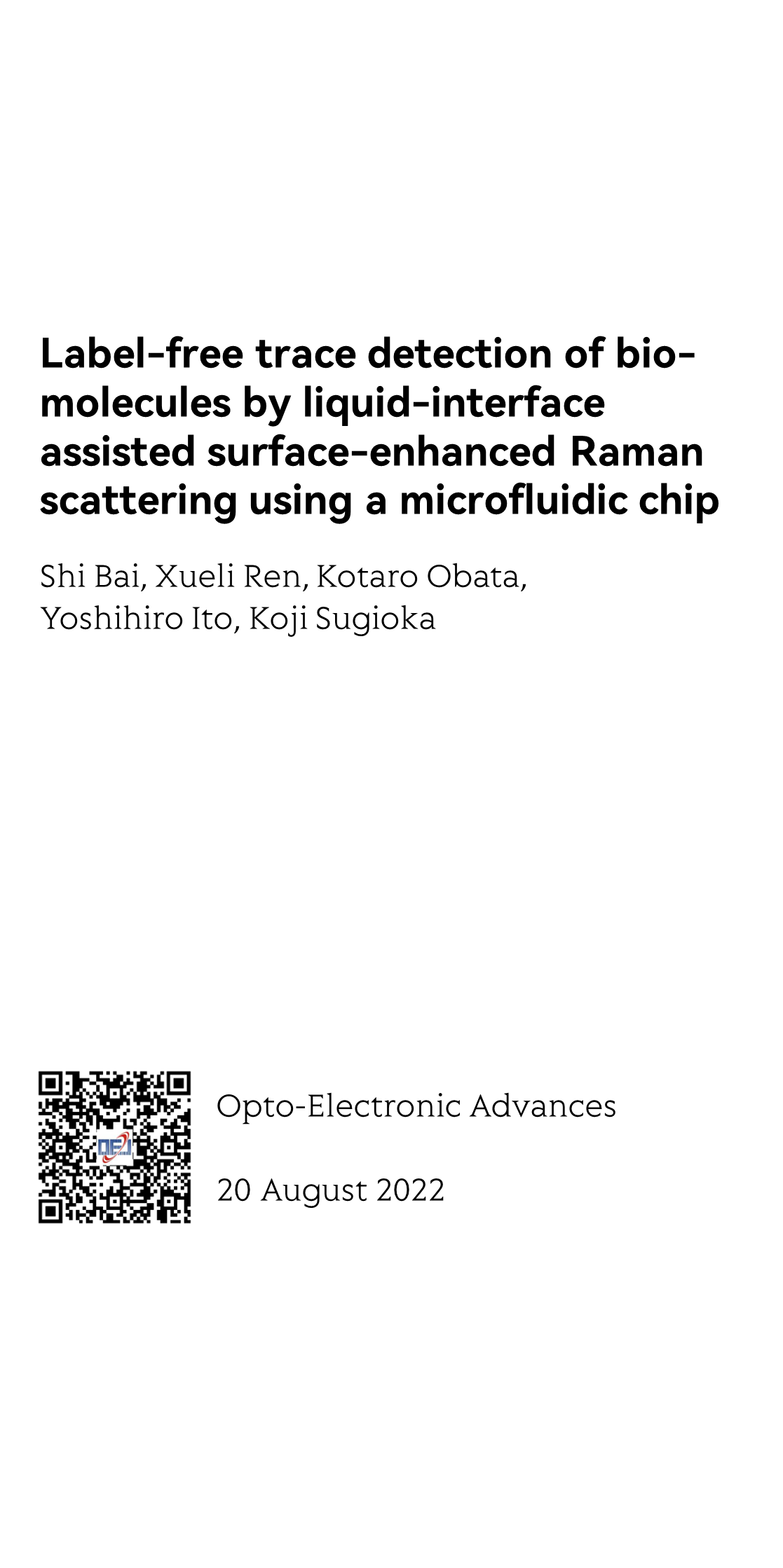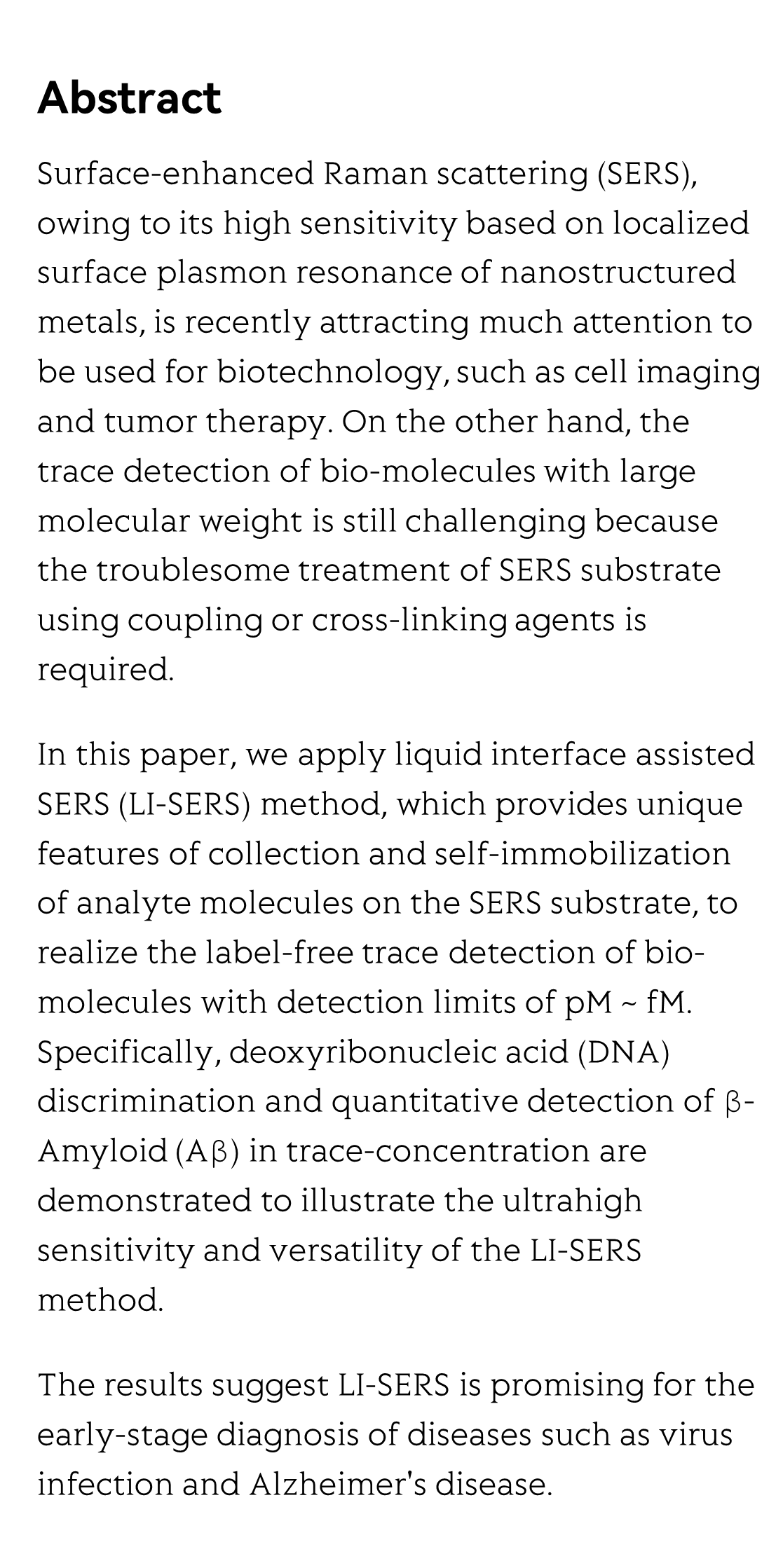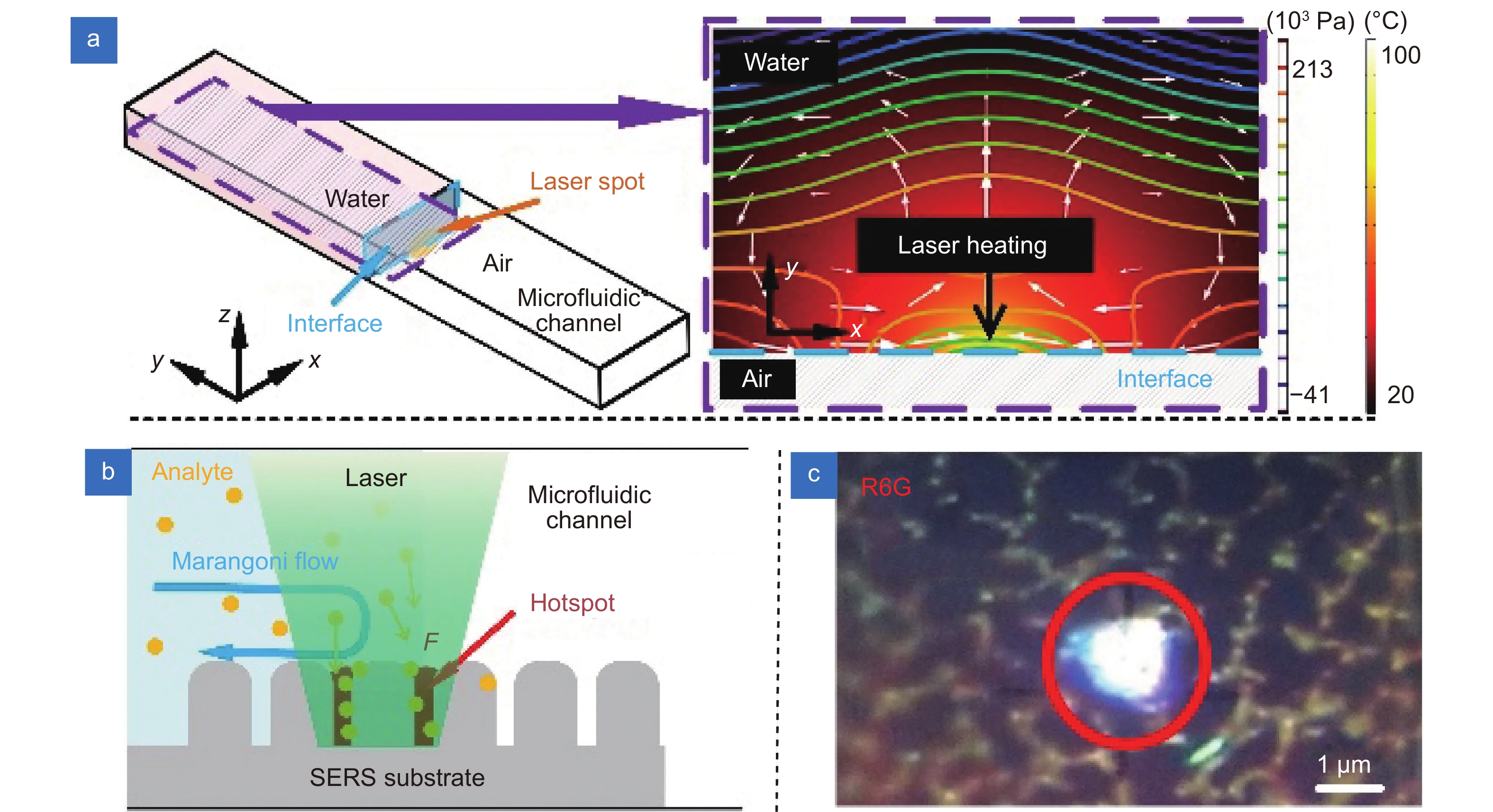Label-free trace detection of bio-molecules by liquid-interface assisted surface-enhanced Raman scattering using a microfluidic chip
使用微流控芯片通过液体界面辅助表面增强拉曼散射实现生物分子的无标记痕量检测
マイクロフロー制御チップを用いた液体界面支援表面増強Raman散乱による生体分子の無標識微量検出
마이크로 흐름 제어 칩을 사용하여 액체 인터페이스를 통해 표면을 보조하여 라만 산란을 강화하여 생물 분자의 무표시 흔적 검측을 실현한다
Detección de trazas no etiquetadas de biomoléculas mediante dispersión Raman mejorada de la superficie asistida por interfaz líquida con Chip microfluídico
Détection de traces non marquées de biomolécules par Diffusion Raman améliorée en surface assistée par interface liquide à l'aide d'une puce Microfluidique
Etikettenfreie Spurenerkennung von Biomolekülen durch flüssigkeits-unterstützte oberflächenverstärkte Raman-Streuung mittels mikrofluidischem Chip
マイクロフロー制御チップを用いた液体界面支援表面増強Raman散乱による生体分子の無標識微量検出
마이크로 흐름 제어 칩을 사용하여 액체 인터페이스를 통해 표면을 보조하여 라만 산란을 강화하여 생물 분자의 무표시 흔적 검측을 실현한다
Detección de trazas no etiquetadas de biomoléculas mediante dispersión Raman mejorada de la superficie asistida por interfaz líquida con Chip microfluídico
Détection de traces non marquées de biomolécules par Diffusion Raman améliorée en surface assistée par interface liquide à l'aide d'une puce Microfluidique
Etikettenfreie Spurenerkennung von Biomolekülen durch flüssigkeits-unterstützte oberflächenverstärkte Raman-Streuung mittels mikrofluidischem Chip



Reviews and Discussions
